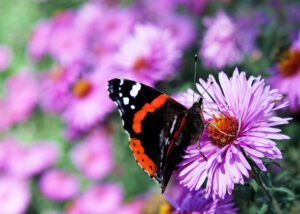
As the colors of summer gradually fade and the air turns crisp, many might assume that gardening season is winding down. However, that’s not entirely true! Fall presents a wonderful opportunity to continue our efforts in supporting pollinators and creating a vibrant ecosystem in our gardens. By choosing the right plants and taking a few simple steps, we can ensure that our gardens remain alive with the buzzing of bees, fluttering of butterflies, and the delightful presence of other pollinators throughout the autumn months.
Why Plant for Pollinators in the Fall?
You might wonder why it’s worth investing time and effort into planting for pollinators during the fall. Well, the answer lies in the seasonal behavior of these essential creatures. Many pollinators, such as certain butterflies, moths, and even some bees, undergo an important part of their life cycles during the fall.
Fall-blooming plants play a crucial role in the survival of pollinators before the colder months set in. These late-season flowers act as valuable food sources when other resources may become scarce. By extending the availability of nectar and pollen, we are helping our pollinator friends build up their strength and store essential nutrients for their winter hibernation or migration. By providing them with nectar-rich flowers and suitable habitats, we can support their journey as they prepare for the coming winter or for their migration to warmer regions.
Choosing the Right Plants
Selecting the right plants is vital when planning a pollinator-friendly fall garden. Here are some fabulous choices to consider:
- Asters: These daisy-like flowers come in a range of colors and provide an abundant source of nectar for bees and butterflies.
- Goldenrod: Despite its unfair reputation for causing allergies (which is usually attributed to ragweed), goldenrod is an excellent late-season pollinator plant.
- Sedums: Also known as stonecrops, these succulent plants produce clusters of tiny flowers, attracting butterflies and bees.
- Joe-Pye Weed: Loved by butterflies, this tall perennial offers a delightful display of pinkish-purple flowers.
- Helenium: This cheerful flower with warm hues is a magnet for butterflies and other pollinators.
Create Pollinator-Friendly Habitats
While planting pollinator-friendly flowers is crucial, don’t forget to consider the overall habitat for these beneficial insects. Here are some tips to create a welcoming environment for them:
- Leave some areas wild: Allow parts of your garden to grow naturally or incorporate some native wildflowers to provide shelter and nesting spots for pollinators.
- Avoid using pesticides: Minimize the use of chemicals in your garden to protect pollinators from harmful substances.
- Add water sources: Include shallow dishes or birdbaths with stones for landing spots, providing pollinators with a place to drink and bathe.
- Offer shelter: Consider installing bee hotels or leaving some areas of soil exposed for solitary bees to nest.
Fall Maintenance
As fall progresses, some light maintenance will help your pollinator-friendly garden thrive:
- Deadhead spent flowers: By removing faded blooms, you encourage plants to continue producing nectar-rich flowers.
- Water as needed: Fall can still be dry, so ensure your plants have adequate water to keep providing for pollinators.
- Mulch wisely: While mulching can protect plants, avoid covering the base of the stems, as this can attract rodents that might feed on pollinators.
As the days grow shorter and the temperatures drop, your garden can still play a crucial role in supporting pollinators. Embrace the opportunity to create a vibrant and nourishing environment for these essential creatures, ensuring that they continue their important work of pollinating our plants and contributing to the beauty and balance of nature. With a little effort and a lot of love for nature, your fall garden can become a haven for pollinators, leaving you with a sense of fulfillment and a thriving ecosystem to enjoy year after year. Happy planting!
